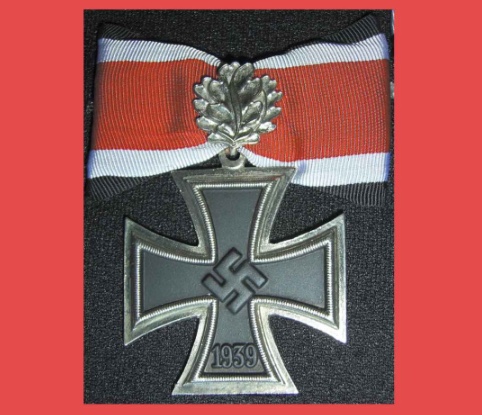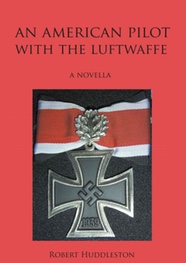Remembering the Battle of the Bulge

Officially it was Ardennes Offensive and lasted from December 16, 1944 through January 25, 1945. In the wake of this historic battle the focus was on the heroism—richly deserved—of the American troops led by Brig. Gen. Anthony McAuliffe who famously responded with “Nuts” to a German demand to surrender. More recent scholarship, however, describes the event as a failure of American military leaders, many generals being on leave in Paris and London convinced the Germans could only mount a defense of their fatherland not an attack. (The day before the Germans launched their offensive, British Field Marshall Montgomery asked the Supreme Commander General Eisenhower for leave in London.) As for military intelligence, they discounted numerous signs indicating the German were moving large forces to the front, actually, 400 thousand men along with 1400 tanks, and assault guns, and 2,600 pieces of artillery. Also, the Luftwaffe had amassed 1,000 fighter aircraft to gain air superiority for the ground attack. (An unsettled issue is whether some Allied leaders knew of the German preparations by virtue of having broken the German code enigma but chose not to reveal that ability.)
 While
the Allies eventually prevailed, it was one of the most costly
campaigns fought by American forces with just short of ninety
thousand casualties, which included nineteen thousand killed. Even
more indicative of a failure of leadership is that the infantrymen
rushed to the conflict were poorly trained, many even arrived at
their assigned unit without rifles. (All this and more in The
Guns at Last Light: The War in Western Europe, 1944—1945 by
Rick Atkinson. 2013.)
While
the Allies eventually prevailed, it was one of the most costly
campaigns fought by American forces with just short of ninety
thousand casualties, which included nineteen thousand killed. Even
more indicative of a failure of leadership is that the infantrymen
rushed to the conflict were poorly trained, many even arrived at
their assigned unit without rifles. (All this and more in The
Guns at Last Light: The War in Western Europe, 1944—1945 by
Rick Atkinson. 2013.)
In the middle of the Atlantic when the Germans launched their Ardennes offensive, Army Air Corps (AAC) replacement pilots assigned to the European Theater of Operations (ETO), of which I was one, received little news of the military situation. Upon arriving in England, a few replacement pilots would remain to serve with units of the Eighth (Strategic) Air Force, but most would move to the continent to serve with the Ninth (Tactical) Air Force then grounded by unflyable weather.
Those of us destined for fighter squadrons based throughout France and Belgium were flown to Paris in a C-47 transport and shuttled by truck to one of the Rothschild mansions. If we had expected luxurious accommodations that dream was soon dashed as we were lodged in tents in the courtyard.
When a request came in for replacement pilots, the number was posted on a large chart beside the appropriate squadron. When a “2” appeared beside the 506th Fighter Squadron, I quickly volunteered along with a colleague, Mark O'Connor. Two other friends had been posted to the 508th FS the day before, which, along with the 507th FS made up the 404th Fighter Group. It was located in St. Trond, Belgium, about 40 miles east of Brussels.
“Here are your orders Lieutenant, a truck will deliver you to the station,” a sergeant explained. I was handed our orders as the ranking officer, O'Connor being a Flight Officer, slightly lower in rank. It made no difference that I was younger and more unworldly than Mark. “Rank,” we were told, “has its privileges, but it also has its responsibilities.” What those “privileges” were I never learned.
Dropped at the Paris railway station, this officer-in-charge was instantly confused. Fortunately, Mark spoke high school French and we soon found ourselves on a train bound for Brussels. The French conductor was indifferent as to how we might proceed on to St. Trond.
The train was crammed, well-beyond available seating, with more civilians than military. Neither the German offensive, nor the V2 rocket attacks on Brussels, deterred many Belgians from returning home. Two cold (yes, this was the coldest winter in Europe in recorded history) and tired American officers arrived in Brussels only to learn that the only train to our destination would leave the next morning. Compounding that problem was the fact that there was no American billet. The British had captured Brussels and was the occupying power. Our fondness for our British ally turned sour when we were turned away from a hotel reserved for officers—British officers, that is. Private hotels scoffed at our French francs but an American soldier was persuaded to exchange French for Belgian francs and the British Red Cross managed to locate an available room.
The capstone to this tale came as we checked into a sparse room above a small shop. We had barely settled into bed and doused the light when we discovered, though a very thin partition, an Englishman and a Belgian lass were coupling next door. Tired as we were, sleep came slowly.
The final leg to St. Trond and the Battle of the Bulge was uneventful. After completing the required “reporting for duty, sir” at Group HQ, we found our way to the 506th flight room to meet our fellow pilots then grounded by the weather. Our tale of being cold, tired, hungry and devoid of Belgium francs during our layover in Brussels generated smiles, even outright laughter.
“Didn't you bring any cigarettes?” one pilot asked, knowing they could be had aboard ship for 50 cents a carton.
“Sure, a couple of cartons and Mark doesn't smoke.” I responded.
“Hell man,” he said, “for a couple of packs you could have stayed at the best hotel in Brussels.” He then added with a smile, “Add another pack would have provided interesting company.”
We had been introduced to the war economy of Europe.
POSTSCRIPT Having arrived after January 1, we learned we had missed some excitement. On New Year's Day, when skies had cleared, the Germans launched Operation Bodenplatte, an attack on Allied airfields by the Luftwaffe to gain air superiority in order to resume their stalled ground attack. Of a thousand German fighters launched, two hundred were destroyed by “friendly fire,” German anti-aircraft batterie, many manned by members of the Hitler Youth unused to seeing any aircraft but Allied. Of the eight hundred aircraft attacking Allied bases, more were destroyed than those attacked. At the St. Trond base ten attacking aircraft were destroyed and twice that number damaged. One Luftwaffe FW-190 fighter actually landed on the field, the German pilot apparently deciding the war was lost. My only connection to the New Year's Day “party” was my picture taken in our “captured” Luftwaffe fighter.